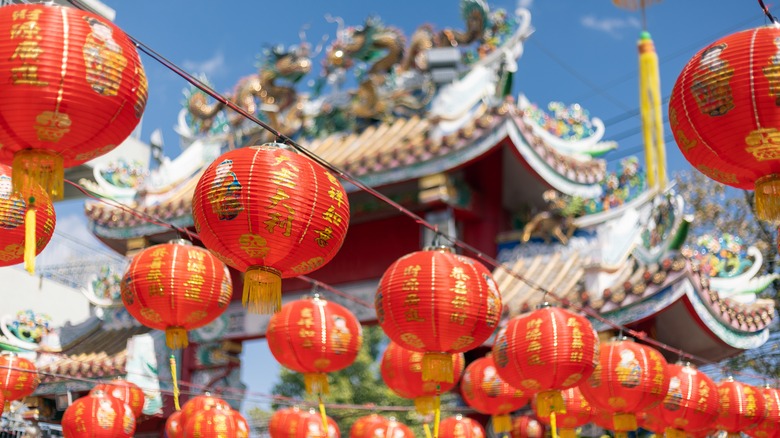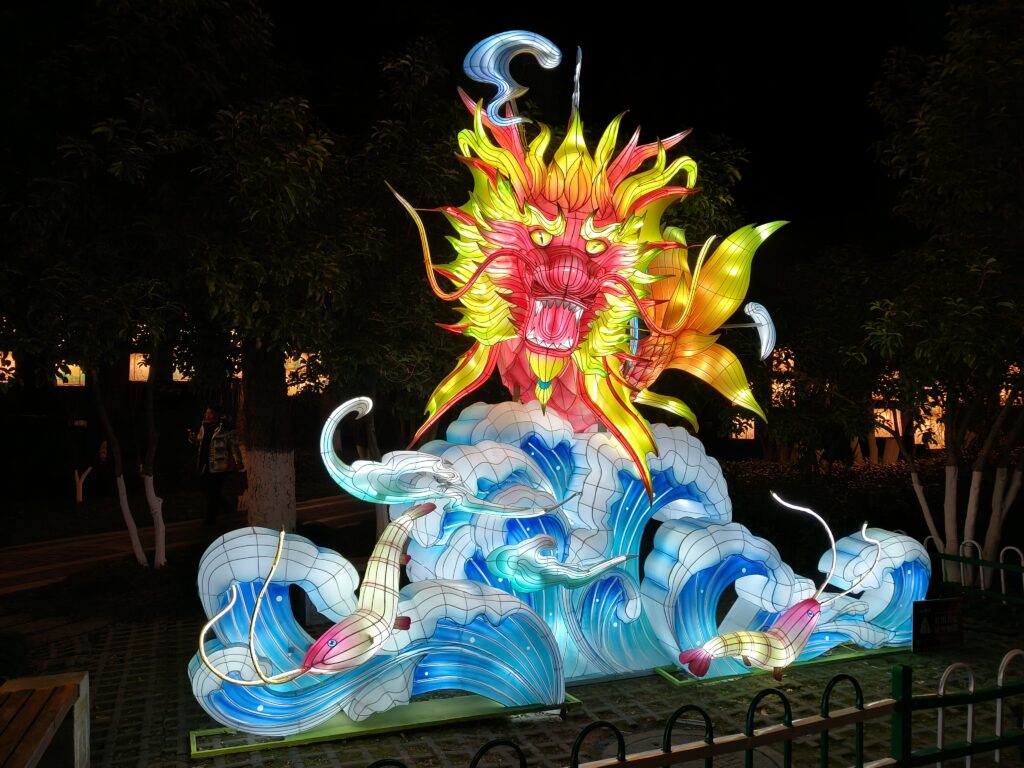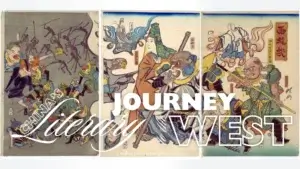
Introduction
Chinese Lunar New Year, also known as the Spring Festival, is a time of vibrant celebrations, cherished traditions, and rich cultural heritage. Rooted in ancient customs and steeped in symbolism, this annual event marks the beginning of the lunar calendar in Chinese culture. As families come together to usher in the new year, streets dazzle with colorful decorations, the air is filled with the sounds of firecrackers, and the aroma of festive delicacies wafts through the air. In this blog post, we delve into the captivating history of Chinese Lunar New Year, explore regional practices and traditions, and unravel the significance of the zodiac animals that define each year. Join us on a journey through time and culture as we celebrate the Year of the Dragon.
A Glimpse into History
The origins of Chinese Lunar New Year can be traced back over 4,000 years to the Shang Dynasty (1600-1046 BCE). Ancient agrarian societies in China relied heavily on the lunar calendar to mark the passage of time and determine agricultural cycles. The festival evolved over the centuries, blending religious rituals, cultural practices, and folk traditions.
Legend has it that the festival began with the fight against a mythical beast called Nian, which would ravage villages and devour livestock and crops. To ward off Nian’s attacks, people would hang red lanterns, set off firecrackers, and decorate their homes with red paper cutouts—a tradition that continues to this day.
Regional Practices and Traditions


Chinese Lunar New Year is celebrated with great fervor across China and in Chinese communities around the world. While the essence of the festival remains consistent, different regions have their own unique customs and traditions.
- Northern China: In northern China, dumplings (jiaozi) are a quintessential Lunar New Year delicacy. Families gather to make dumplings together, filling them with a variety of ingredients symbolizing wealth, prosperity, and good fortune. The shape of dumplings resembles ancient Chinese currency, further reinforcing their auspicious significance.
- Southern China: A significant tradition in Southern China is the making of rice cakes (nian gao). Nian gao, also known as “year cake” or “new year cake,” is a sticky rice cake that symbolizes growth, prosperity, and the promise of a sweet new year. Families gather to make nian gao together, steaming the glutinous rice mixture until it becomes soft and chewy. The cake is then sliced and served as a dessert or snack throughout the holiday season, with its sticky texture believed to “stick” the family together and bring good luck in the coming year.
- All China: Mainland China and Taiwan both enjoy the Lantern Festival, marking the culmination of the Lunar New Year celebrations. Colorful lanterns of all shapes and sizes illuminate the night sky as families gather for parades, performances, and traditional games. The festival symbolizes hope, renewal, and the triumph of light over darkness.
The Zodiac Animals
Central to the Chinese zodiac is a twelve-year cycle, with each year represented by a different animal. These animals, along with their associated traits and characteristics, play a significant role in Chinese astrology and culture.

- Rat (鼠 – shǔ): Those born in the Year of the Rat are believed to be resourceful, intelligent, and adaptable. Rats are associated with wealth and abundance in Chinese culture, symbolizing prosperity and success.
- Ox (牛 – niú): People born in the Year of the Ox are known for their diligence, strength, and determination. Oxen represent hard work, resilience, and steady progress towards goals.
- Tiger (虎 – hǔ): Tigers are courageous, passionate, and fiercely independent. Those born in the Year of the Tiger are believed to possess leadership qualities, charisma, and a zest for life.
- Rabbit (兔 – tù): Rabbits are gentle, compassionate, and intuitive creatures. Individuals born in the Year of the Rabbit are often artistic, sensitive, and adept at forming meaningful connections with others.
- Dragon (龙 – lóng): The Year of the Dragon is regarded as one of the most auspicious in the Chinese zodiac. Dragons are associated with power, strength, and good fortune. Those born in the Year of the Dragon are believed to be ambitious, charismatic, and destined for success.
- Snake (蛇 – shé): People born in the Year of the Snake are often described as wise, intuitive, and enigmatic. Snakes symbolize transformation, wisdom, and hidden knowledge.
- Horse (马 – mǎ): Those born in the Year of the Horse are known for their independence, energy, and adventurous spirit. Horses represent freedom, vitality, and swift progress.
- Goat (羊 – yáng): People born in the Year of the Goat are gentle, compassionate, and artistic individuals. Goats symbolize harmony, creativity, and peace.
- Monkey (猴 – hóu): Monkeys are known for their intelligence, wit, and adaptability. Those born in the Year of the Monkey are often innovative, curious, and quick-thinking.
- Rooster (鸡 – jī): People born in the Year of the Rooster are confident, hardworking, and charismatic. Roosters symbolize honesty, punctuality, and loyalty.
- Dog (狗 – gǒu): Those born in the Year of the Dog are loyal, sincere, and protective individuals. Dogs represent loyalty, friendship, and unconditional love.
- Pig (猪 – zhū): People born in the Year of the Pig are known for their kindness, generosity, and sincerity. Pigs symbolize abundance, fertility, and prosperity.
Significance of the Year of the Dragon
In Chinese astrology, the Year of the Dragon is considered highly auspicious. Dragons are revered for their power, strength, and mystical qualities. The dragon’s presence in the zodiac cycle is said to bestow blessings upon all aspects of life, from career advancement to personal relationships. It is a time of heightened energy, ambition, and opportunities for growth. As the dragon soars into the celestial realm, it ignites the flames of hope and optimism for the year ahead, inspiring individuals to pursue their dreams with courage and determination.
The Year of the Dragon holds particular significance due to its mythological and cultural meaning within China. The people of China have long considered themselves descendants of the dragon, viewing it as a symbol of power, wisdom, and auspiciousness. In ancient times, the dragon symbolized the emperor, embodying the authority and divinity of the imperial ruler. As such, the Year of the Dragon is associated with the reign of prosperity, stability, and benevolent leadership. It is believed that during this year, the dragon’s benevolent influence permeates society, bringing harmony, justice, and prosperity to all.
Dragons and Emperors

One of the most famous legends pertaining to the origination of human-dragon interaction is the tale of the Yellow Emperor, Huang Di, and the Dragon. According to Chinese mythology, Huang Di was a legendary ruler and cultural hero who is often credited with laying the foundation of Chinese civilization. In the ancient text “Huainanzi,” there’s a story about Huang Di’s encounter with a dragon:
Legend has it that during Huang Di’s reign, he embarked on a quest to seek wisdom and enlightenment. He journeyed to a remote mountain where he encountered a mighty dragon. Instead of being fearful, Huang Di engaged the dragon in conversation, expressing his admiration for the dragon’s wisdom and power.
The dragon, impressed by Huang Di’s humility and reverence, revealed himself as the guardian deity of the celestial realm. He imparted to Huang Di profound knowledge of the cosmos, the cycles of nature, and the mysteries of the universe.
In gratitude for the dragon’s teachings, Huang Di vowed to honor and respect the dragon for eternity. He declared the dragon as a symbol of imperial authority and divine grace, associating it with the emperor’s lineage and the prosperity of the Chinese people.
The Nature of Dragons

Moreover, in Chinese mythology and folklore, the dragon is often depicted as a guardian deity and celestial being. According to legend, dragons possess the ability to control the elements and manipulate the forces of nature. They are revered as symbols of transformation, renewal, and spiritual enlightenment. In the context of the Lunar New Year, the dragon’s presence signifies the renewal of life, the awakening of dormant potential, and the emergence of new opportunities. It is a time for individuals to harness the dragon’s energy and embark on bold endeavors, knowing that success and good fortune await those who dare to dream.
The Year of the Dragon encapsulates the essence of Chinese culture and spirituality, embodying the virtues of strength, wisdom, and auspiciousness. It serves as a reminder of the profound connection between humanity and the cosmos, as well as the eternal quest for harmony and balance in the universe. As we embark on this auspicious year, let us embrace the dragon’s blessings and embark on a journey of self-discovery, growth, and fulfillment.
Conclusion
As we celebrate Chinese Lunar New Year and welcome the Year of the Dragon, let us embrace the rich tapestry of tradition, culture, and symbolism that defines this auspicious occasion. From ancient legends to modern-day festivities, the spirit of renewal and hope permeates every aspect of the Spring Festival. As families gather to share meals, exchange gifts, and honor cherished customs, let us also reflect on the timeless wisdom and enduring legacy of Chinese culture. Wishing you prosperity, happiness, and good fortune in the Year of the Dragon!




